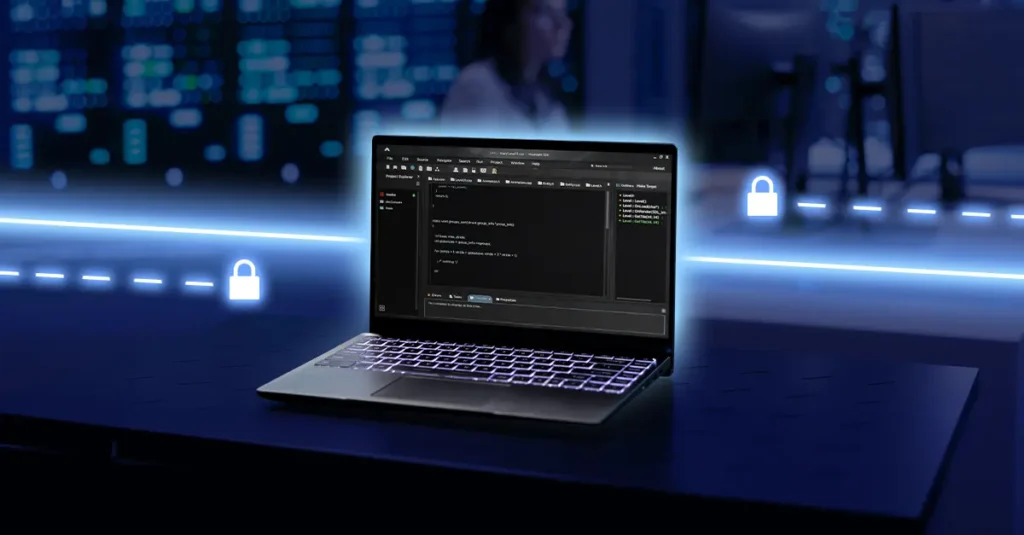The wave of digitalization across all sectors has brought enormous benefits, but it has also exposed organizations to a new array of cybersecurity threats. From the theft of sensitive information to the disruption of critical operations, cyberattacks are becoming increasingly common and sophisticated. In this context, network perimeter security is the first barrier to prevent attackers from accessing internal systems and compromising the network.
What is Network Perimeter Security?
Network perimeter security is a set of techniques and tools designed to protect an organization’s network and systems from unauthorized access. Its main goal is to control and restrict the network traffic that enters and exits an organization, acting as a barrier between the trusted internal environment and the external world.
This protection is established at the “perimeter” of the network, which is the point where internal and external networks connect, typically through firewalls, routers, and other security devices. Although the concept of the “perimeter” has evolved due to the adoption of cloud and mobile networks, it remains an essential part of a robust cybersecurity strategy.
Key Components of Network Perimeter Security
Network perimeter security consists of various technologies that protect an organization’s assets from external threats. Below, we explore some of the most fundamental components of a modern perimeter security strategy.
1. Routing
Routing is how network devices, such as routers, direct traffic between networks. In a secure network, routing ensures that data packets only reach their legitimate destination. Properly configuring routing tables and policies is crucial to prevent data from being sent to unauthorized places, which could open the door to malicious interceptions.
2. NAT/DHCP
Network Address Translation (NAT) allows organizations to hide the internal IP addresses of devices within the network by translating them into a public IP address when traffic exits. This adds a layer of security by making internal devices less accessible to external attackers. On the other hand, Dynamic Host Configuration Protocol (DHCP) is a basic network function that can play a role in network perimeter security if configured with additional measures, such as limiting the IP range to mitigate spoofing attacks or reserving specific IPs for critical devices, ensuring that only authorized equipment gains network access.
3. Traffic Shaping
Traffic shaping manages traffic flow on a network to ensure that certain types of traffic (such as critical applications) receive priority over others. In the context of network perimeter security, this can be useful to prevent malicious or unwanted traffic from consuming all of the network’s bandwidth, which could impact the performance and security of key applications.
4. VPN (Virtual Private Network)
VPNs play a vital role in extending the security perimeter to remote users and offices. They allow employees to securely access the company’s internal network by encrypting the connection to protect data from interception attacks. VPNs create a secure tunnel over the public internet, ensuring both the confidentiality and integrity of data during transmission.
5. Stateful Firewall
A stateful firewall not only filters traffic based on predefined rules but also keeps a record of the states of active connections to decide whether incoming or outgoing packets should be allowed. This type of firewall is much more effective than a traditional rule-based firewall, as it can make intelligent decisions about traffic based on the context of the connection, helping to detect abnormal or malicious behaviors.
6. IPS (Intrusion Prevention System)
Intrusion Prevention Systems (IPS) detect attacks in real time and take automated actions to prevent their success. This technology can block malicious traffic, disconnect suspicious sessions, or reconfigure network devices to prevent a threat from spreading. IPS is often combined with firewalls for a more integrated defense.
7. Advanced Malware Protection (AMP) and Anti-Spam
AMP analyzes file behavior for irregular patterns, conducts retrospective analyses, and provides real-time visibility, offering critical defense against advanced malware and Advanced Persistent Threats (APTs). Anti-Spam solutions filter out unwanted or malicious emails, which often contain phishing links or infected attachments. Anti-spam filters block these messages before they reach inboxes, minimizing the risk of users clicking on dangerous content and thus preventing attacks such as credential theft or ransomware.
8. Application Control
Application control allows organizations to manage which applications can run within their network, blocking or limiting those that pose a security risk. This approach is useful for protecting against malicious or unauthorized applications that could act as attack vectors if executed without the security team’s knowledge.
9. URL, DNS & Video Filtering
URL, DNS, and video filtering tools are essential for blocking access to dangerous websites or services that could be used for phishing or malware distribution. These solutions analyze and filter network requests based on blacklists, risk categorizations, and content analysis, preventing users from accessing malicious or compromised content. They are also useful for controlling improper internet use and managing bandwidth.
Current Challenges in Network Perimeter Security
Network perimeter security is not without challenges. One of the biggest issues is the blurred perimeter. Business networks are no longer limited to physical offices; employees work remotely, access resources from mobile devices, and use cloud applications. This has made the traditional perimeter harder to define and control.
Additionally, cyber threats are becoming more sophisticated. Attackers use advanced techniques, such as social engineering and zero-day malware, to bypass traditional perimeter defenses. Therefore, perimeter security must be complemented with more integrated security strategies, such as behavior-based security and continuous monitoring.
Best Practices to Strengthen Network Perimeter Security
To ensure that network perimeter security is effective, it is important to follow a series of best practices:
- Implement regular updates: Keeping security devices like firewalls and IDS/IPS systems updated is crucial to defend against the latest known threats.
- Segment the network configuration: Dividing the network into smaller segments can limit the impact of an attack if an intruder manages to breach the perimeter.
- Conduct regular security audits: Regularly evaluating the state of perimeter security helps identify vulnerabilities and improve defenses.
- Staff education and awareness: Employees are a critical part of cybersecurity. Training staff to recognize common threats, such as phishing emails, is vital to prevent attacks.
Conclusion
Cybersecurity is an ever-evolving field, and while network perimeter security is key, it is not sufficient on its own. Organizations must combine it with other security layers, such as threat detection, incident response, and end-user protection, to build a more resilient defense against an ever-growing threat landscape.
In conclusion, perimeter security remains the first line of defense against cyber threats, but it must be part of a broader, more dynamic strategy to protect digital assets in a constantly evolving threat environment.
At Flō Networks we specialize in developing the most appropriate security solutions for your company, backed by a track record and experience developed over more than 20 years providing connectivity solutions and services using security mechanisms for your network.

